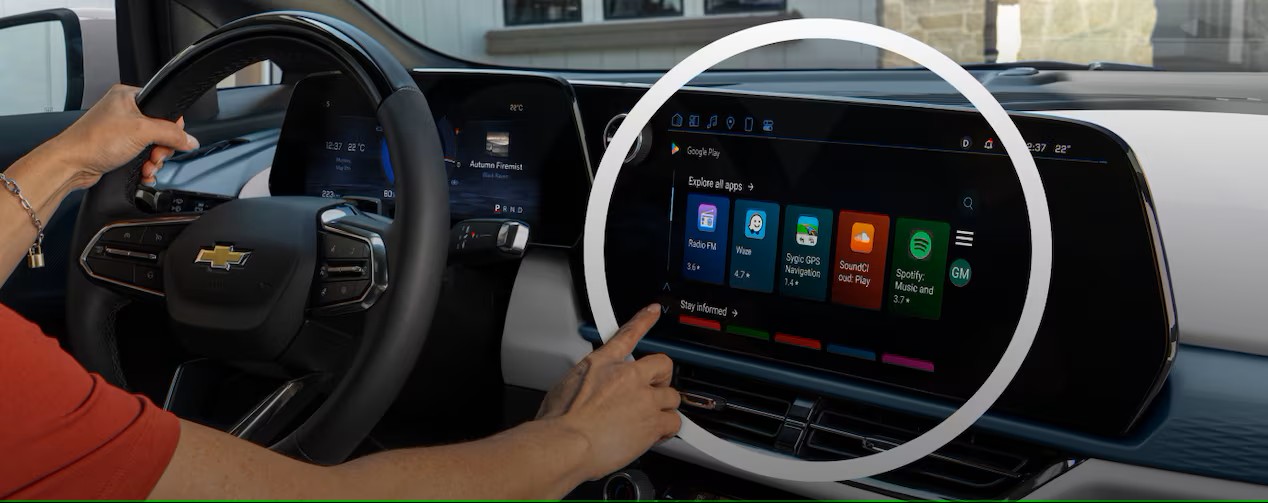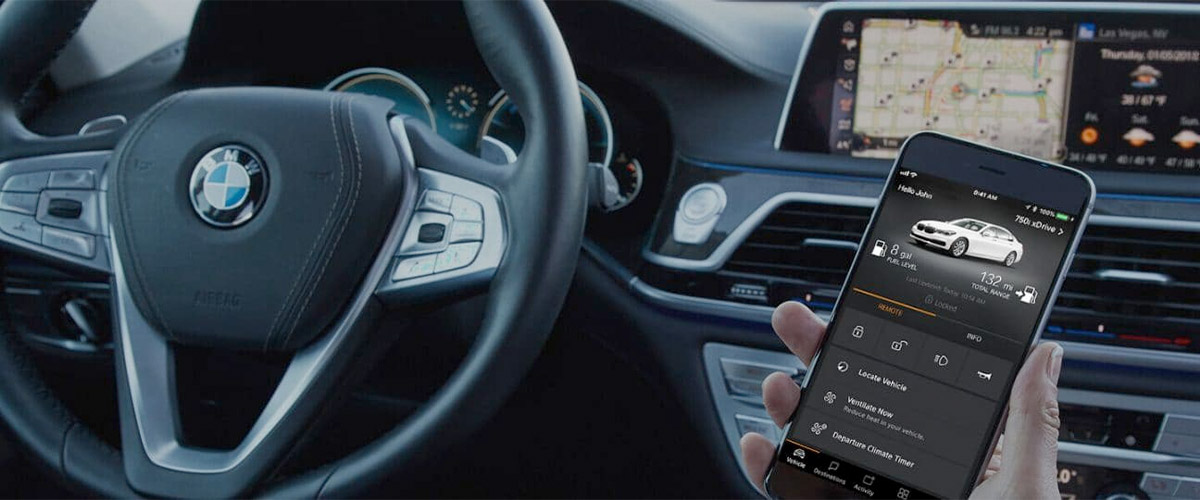In the rapidly evolving landscape of automotive technology, the relationship between vehicles and law enforcement has undergone a dramatic transformation.
Modern vehicles are increasingly equipped with sophisticated systems designed to automatically communicate with emergency services and police departments, fundamentally changing how incidents are reported and responses are coordinated.
This technological evolution represents a double-edged sword in contemporary society, where the balance between safety, privacy, and surveillance continues to be debated.
The integration of automatic notification systems in vehicles stems from both regulatory requirements and manufacturer initiatives aimed at enhancing public safety.
European Union regulations have mandated eCall systems in all new vehicles since 2018, automatically contacting emergency services during serious accidents.
Similarly, manufacturers across the globe have developed proprietary systems that extend beyond mere crash detection, incorporating features like theft alerts, breakdown assistance, and even predictive maintenance notifications that can involve law enforcement.
However, not all vehicles embrace this connected approach. Some manufacturers and models deliberately maintain a more traditional, disconnected stance, prioritizing driver privacy and autonomy over automated connectivity.
These vehicles represent a philosophy that places control firmly in the hands of the driver, requiring manual intervention for any communication with authorities.
This divide reflects broader societal tensions about digital privacy, government surveillance, and individual autonomy in an increasingly connected world.
Understanding which vehicles automatically notify police and which maintain silence is crucial for consumers making informed purchasing decisions, law enforcement agencies planning their response strategies, and policymakers considering future regulations.
The implications extend far beyond simple convenience, touching on fundamental questions about privacy rights, emergency response effectiveness, and the role of technology in public safety.
5 Vehicles That Notify Police Automatically
These technologically advanced vehicles feature comprehensive theft detection systems that automatically notify law enforcement when unauthorized access or suspicious activity is detected around the vehicle.
Their sophisticated sensor networks continuously monitor for forced entry attempts, unusual movement patterns, and tampering with critical systems, instantly transmitting alerts to authorities through integrated cellular communication systems.
These devices use electronic transmission technology that help law enforcement reveal the location of stolen vehicles and possibly catch the thief in the act, making them invaluable tools in modern crime prevention.
The integration of multiple detection methods creates a robust security network that includes motion sensors, window break detectors, and GPS tracking systems that work together to provide comprehensive protection.
A comprehensive vehicle anti-theft and alarm system that immediately notifies a vehicle owner when a vehicle is being tampered with. Notification is accomplished via wireless signal to the owners’ cell phone, personal digital assistant (PDA), laptop or desktop computer, or other electronic devices, ensuring rapid response from both owners and authorities when threats are detected.
1. Tesla Model Series (All Current Models)
Tesla has established itself as a pioneer in vehicle connectivity and automatic emergency response systems, with all current Model S, Model 3, Model X, and Model Y vehicles featuring comprehensive automatic notification capabilities.
The company’s approach to police notification represents one of the most sophisticated systems currently available in consumer vehicles, integrating multiple layers of detection and communication protocols.
The Tesla automatic notification system operates through a combination of built-in sensors, accelerometers, and advanced artificial intelligence algorithms that continuously monitor vehicle status and driving conditions.
When the system detects a potential emergency situation such as a severe collision, airbag deployment, or sudden deceleration that exceeds predetermined thresholds it automatically initiates contact with emergency services.
The system doesn’t simply make a basic emergency call; it transmits detailed telemetry data including exact GPS coordinates, vehicle identification information, impact severity assessments, and even passenger count estimates based on seatbelt sensors.
What sets Tesla apart is their integration with the broader emergency response ecosystem. The vehicle’s notification system can differentiate between different types of incidents, automatically routing calls to appropriate authorities.
For instance, if the vehicle’s security system detects unauthorized access or theft attempts, it can notify both local police and Tesla’s own security monitoring services simultaneously.
The company’s over-the-air update capability means these notification protocols are constantly being refined and enhanced, with new trigger events and communication methods being added regularly.

Tesla’s system also includes proactive monitoring features that can alert authorities before incidents occur. The vehicle’s Autopilot and Full Self-Driving systems continuously analyze driving patterns and environmental conditions, potentially flagging dangerous situations to emergency services.
This predictive capability represents a significant advancement in automotive safety technology, moving beyond reactive emergency response to proactive incident prevention.
The connectivity extends to Tesla’s mobile application, which provides owners with real-time notifications when their vehicle initiates emergency communications.
This transparency helps maintain user trust while ensuring that false alarms can be quickly identified and canceled. However, the comprehensive nature of Tesla’s monitoring has raised privacy concerns, as the vehicles collect and transmit vast amounts of data about driving habits, locations visited, and vehicle usage patterns.
Tesla’s automatic notification system has proven its effectiveness in numerous real-world scenarios, with documented cases of the system successfully summoning emergency responders to accident scenes where occupants were incapacitated.
The company regularly publishes safety reports highlighting how their automatic emergency features have contributed to saving lives and reducing response times for first responders.
2. Mercedes-Benz with mbrace PLUS/Connect Services
Mercedes-Benz has developed one of the most comprehensive automatic notification systems in the luxury vehicle segment through their mbrace technology platform, which has evolved significantly since its introduction.
The current iteration, available across most of the Mercedes-Benz lineup, including the C-Class, E-Class, S-Class, and SUV models, represents a sophisticated integration of emergency response, vehicle security, and law enforcement communication capabilities.
The mbrace automatic collision notification system activates immediately when the vehicle’s sensors detect a serious accident, defined by specific criteria including airbag deployment, significant impact force, or sudden change in velocity that exceeds safe parameters.
Upon activation, the system establishes a direct connection with Mercedes-Benz’s emergency response center, which is staffed 24 hours a day with trained operators who can communicate in multiple languages.
These operators receive detailed vehicle telemetry data, including precise location coordinates, impact severity assessments, and vehicle identification information.
What distinguishes Mercedes-Benz’s approach is the human element integrated into their automatic system. Rather than simply routing calls directly to local emergency services, the mbrace system connects first with Mercedes-Benz emergency operators who assess the situation, attempt to communicate with vehicle occupants, and then coordinate with appropriate emergency responders.
This intermediate step helps reduce false alarms while ensuring that emergency services receive comprehensive information about the incident before arriving on scene.
The system extends beyond crash detection to include automatic theft notification capabilities. If the vehicle’s security system detects unauthorized entry, ignition without proper key authentication, or movement while armed, it automatically alerts both the mbrace monitoring center and local law enforcement agencies.

The notification includes real-time GPS tracking information, allowing police to monitor the vehicle’s location as it moves. This feature has proven particularly effective in vehicle recovery operations, with Mercedes-Benz reporting high success rates in retrieving stolen vehicles equipped with the system.
Mercedes-Benz has also integrated their automatic notification system with advanced driver assistance features, creating a comprehensive safety net that can predict and respond to various emergency scenarios.
The system can detect when a driver becomes unresponsive, potentially due to medical emergency, and automatically initiate emergency protocols including gradual vehicle deceleration and emergency service notification.
The mbrace system includes sophisticated privacy controls, allowing owners to customize notification preferences and opt out of certain monitoring features while maintaining essential safety functions.
This approach reflects Mercedes-Benz’s recognition of the privacy concerns associated with comprehensive vehicle monitoring while maintaining the safety benefits of automatic emergency response.
Recent updates to the mbrace system have expanded its integration with law enforcement databases, enabling faster identification of vehicles involved in incidents and streamlining the information sharing process between Mercedes-Benz’s monitoring center and responding agencies.
This enhanced cooperation has improved response times and helped law enforcement agencies better prepare for emergency responses.
3. OnStar-Equipped General Motors Vehicles
General Motors’ OnStar system represents one of the longest-running and most established automatic vehicle notification services in the automotive industry, with over two decades of operational experience and millions of vehicles equipped with the technology.
Available across the entire GM portfolio including Chevrolet, Buick, GMC, and Cadillac brands, OnStar has evolved from a basic emergency communication system to a comprehensive platform that integrates emergency response, vehicle security, and law enforcement cooperation.
The OnStar automatic crash response system utilizes advanced sensors throughout the vehicle to detect collision events, including accelerometers that measure impact force, gyroscopes that detect vehicle rotation, and pressure sensors that monitor airbag deployment.
When these sensors indicate a significant collision has occurred, the system automatically connects to OnStar’s emergency response center within seconds, establishing a hands-free voice connection with trained emergency advisors who are available 24 hours a day, 365 days a year.
OnStar’s emergency advisors receive comprehensive data about the incident, including precise GPS coordinates accurate to within three meters, vehicle identification information, impact severity assessments based on sensor data, and details about whether airbags were deployed.
The advisors attempt to communicate with vehicle occupants to assess their condition and gather additional information about the situation. If occupants don’t respond or if the sensor data indicates a severe collision, emergency services are automatically dispatched to the scene with full incident details.
The system’s integration with law enforcement extends beyond emergency response to include stolen vehicle assistance, which has become one of OnStar’s most valuable features for police departments nationwide.

When a vehicle equipped with OnStar is reported stolen, the system can provide real-time location tracking to law enforcement agencies, significantly improving recovery rates.
OnStar can also remotely disable the vehicle’s engine once it’s confirmed stolen and when safe to do so, helping police apprehend suspects without engaging in dangerous high-speed pursuits.
OnStar’s automatic notification capabilities include proactive monitoring features that can detect potential emergencies before they become critical situations.
The system monitors vehicle systems for malfunctions that could pose safety risks, automatically alerting both vehicle owners and, when appropriate, emergency services.
For example, if the system detects a significant oil pressure loss or engine overheating in a remote location, it can proactively contact emergency services to prevent a potential breakdown that could leave occupants stranded.
The service has documented thousands of successful emergency responses, with OnStar reporting that their automatic crash response system contacts emergency services approximately every two minutes somewhere in North America.
The company maintains detailed statistics on response times, successful rescues, and law enforcement assistance cases, demonstrating the tangible benefits of their automatic notification system.
OnStar’s integration with law enforcement has evolved to include cooperation with federal agencies for national security purposes, including the ability to assist in tracking vehicles suspected of involvement in criminal activities.
This capability has raised important questions about privacy and surveillance, leading OnStar to implement strict protocols governing when and how law enforcement access is granted.
4. BMW ConnectedDrive with Emergency Call
BMW’s ConnectedDrive system represents the German automaker’s comprehensive approach to vehicle connectivity and automatic emergency response, available across most of their current model lineup including the 3 Series, 5 Series, 7 Series, X Series SUVs, and i-Series electric vehicles.
The system integrates multiple communication protocols and emergency response capabilities designed to provide seamless interaction with emergency services and law enforcement agencies.
The BMW emergency call system activates automatically when the vehicle’s integrated sensors detect a serious collision, typically triggered by airbag deployment, significant impact forces, or sudden deceleration patterns that indicate a crash has occurred.
Upon activation, the system immediately establishes a connection with BMW’s emergency call center, which maintains 24-hour staffing with multilingual operators trained in emergency response protocols.
The system transmits comprehensive vehicle data including precise GPS coordinates, vehicle identification number, impact severity assessment, and timestamp information.
BMW’s approach emphasizes the integration of human oversight with automated systems, ensuring that every automatic emergency call is evaluated by trained professionals who can assess the situation and coordinate appropriate responses.
The emergency call center operators attempt to establish voice communication with vehicle occupants to determine their condition and gather additional information about the incident.
If communication cannot be established or if sensor data indicates a severe collision, operators immediately contact local emergency services with detailed incident information.
The ConnectedDrive system includes advanced integration with BMW’s comprehensive vehicle monitoring capabilities, enabling the emergency response system to access detailed information about vehicle systems status at the time of the incident.
This information can be valuable for emergency responders, providing insights into potential hazards such as fuel leaks, electrical system damage, or structural compromise that could affect rescue operations.

BMW has developed partnerships with emergency services in multiple countries to optimize the integration between their automatic emergency call system and local response protocols.
These partnerships have resulted in standardized data transmission formats that enable emergency services to quickly process incident information and dispatch appropriate resources.
The system can automatically determine the appropriate emergency services to contact based on GPS location, ensuring that calls are routed to the correct dispatch centers regardless of where the incident occurs.
The ConnectedDrive emergency call system extends beyond crash detection to include manual emergency activation capabilities, allowing occupants to manually trigger emergency calls in situations where automatic detection might not activate.
The manual system connects directly with BMW’s emergency call center, where operators can assess the situation and coordinate appropriate responses, including contacting law enforcement when necessary.
BMW has implemented sophisticated anti-fraud measures within its emergency call system to prevent false alarms and system abuse. The system includes multiple verification protocols that help distinguish between actual emergencies and false triggers, reducing unnecessary emergency service deployments while maintaining high sensitivity to genuine emergencies.
The integration with law enforcement includes capabilities for vehicle recovery assistance in theft situations, where BMW can provide location tracking information to help police recover stolen vehicles.
The system includes remote immobilization capabilities that can be activated in cooperation with law enforcement to prevent vehicle operation by unauthorized users.
Also Read: 5 Cars With Secure Wireless Keys and 5 That Can Be Cloned in Seconds
5. Audi Connect with Emergency Call Assistant
Audi’s Connect system with Emergency Call Assistant represents the company’s sophisticated approach to automatic emergency response and law enforcement notification, available across their premium vehicle lineup, including the A3, A4, A6, A8 sedans, Q-series SUVs, and e-tron electric vehicles.
The system combines Audi’s advanced sensor technology with comprehensive connectivity features to provide seamless emergency response coordination.
The Emergency Call Assistant automatically activates when the vehicle’s safety systems detect a serious collision, utilizing multiple sensor inputs including accelerometers, gyroscopes, and impact sensors strategically positioned throughout the vehicle structure.
The system is calibrated to detect collision events that exceed predetermined severity thresholds, typically correlating with airbag deployment or significant structural deformation that indicates occupant injury is likely.
When activated, the system immediately establishes a secure data connection with Audi’s emergency response center, transmitting a comprehensive data package that includes precise GPS coordinates with accuracy typically within two meters, vehicle identification information, estimated impact severity based on sensor readings, time and date stamps, and preliminary assessment of vehicle systems status.
This data transmission occurs within seconds of collision detection, ensuring that emergency services receive critical information even if vehicle occupants are unable to communicate.
Audi’s emergency response center maintains 24-hour operations with trained multilingual operators who specialize in automotive emergency response coordination.
These operators receive the automatic data transmission and immediately attempt to establish voice communication with vehicle occupants through the vehicle’s hands-free communication system.
The operators are trained to assess occupant condition, gather additional information about the incident, and coordinate with appropriate emergency services.

The system includes sophisticated location determination capabilities that extend beyond basic GPS positioning to include integration with Audi’s detailed mapping systems and traffic information networks.
This enhanced location awareness enables emergency responders to receive not only precise coordinates but also contextual information about road conditions, traffic patterns, and optimal access routes for emergency vehicles.
Audi Connect’s integration with law enforcement includes automatic vehicle theft detection and reporting capabilities. When the vehicle’s security system detects unauthorized access or operation, the system can automatically notify both Audi’s monitoring center and local law enforcement agencies.
The notification includes real-time location tracking that continues as long as the vehicle remains in motion, providing law enforcement with continuous updates on the vehicle’s position.
The Emergency Call Assistant includes manual activation capabilities, allowing occupants to manually trigger emergency calls in situations where automatic activation might not occur.
The manual system provides direct connection to Audi’s emergency response center, where operators can assess the situation and coordinate appropriate responses based on the specific circumstances described by the caller.
Audi has developed partnerships with emergency services across multiple markets to optimize the integration between their automatic emergency call system and local response protocols.
These partnerships have resulted in standardized communication procedures that enable faster response times and more effective coordination between Audi’s monitoring center and local emergency services.
The system includes comprehensive privacy controls that allow vehicle owners to customize their emergency response preferences while maintaining essential safety functions.
Owners can adjust notification settings, emergency contact information, and privacy preferences through Audi’s mobile application and vehicle interface systems.
5 Vehicles That Stay Silent
These conventional vehicles rely entirely on traditional security measures that provide no automatic notification capability to authorities or owners when theft occurs.
Their basic alarm systems, if present, only produce local audible warnings that criminals can quickly disable or simply ignore in busy urban environments where car alarms are commonly dismissed as false alerts.
Without integrated communication systems or theft detection networks, these vehicles become completely vulnerable once thieves successfully bypass their rudimentary security measures.
The absence of automatic notification technology means that vehicle theft can go undetected for hours or even days, giving criminals ample time to strip valuable parts, modify identification numbers, or transport the vehicle to secure locations.
1. Base Model Toyota Camry (Without Toyota Safety Connect)
The base model Toyota Camry represents a significant portion of the mid-size sedan market and exemplifies the traditional approach to vehicle operation where communication with authorities remains entirely under the driver’s control.
Toyota’s decision to offer the Camry without automatic notification systems in its base configuration reflects both cost considerations and a philosophy that prioritizes driver autonomy over automated connectivity.
The base Camry lacks the integrated cellular communication hardware necessary for automatic emergency calling, relying instead on occupants’ mobile devices for emergency communication.
This approach means that in the event of a serious collision, the vehicle itself provides no automatic notification to emergency services or law enforcement agencies. The responsibility for contacting authorities falls entirely to the vehicle occupants, witnesses, or other drivers who might observe an incident.
This traditional approach has both advantages and significant drawbacks. From a privacy perspective, drivers who choose the base Camry can operate with complete confidence that their vehicle is not monitoring their activities, recording location data, or capable of communicating their whereabouts to any external parties without their explicit knowledge and consent.
The vehicle cannot be remotely tracked, monitored, or controlled by manufacturers, service providers, or law enforcement agencies. However, the absence of automatic notification capabilities creates substantial safety risks, particularly in scenarios where vehicle occupants are incapacitated following a collision.
Studies have shown that rapid emergency response significantly improves survival rates in serious accidents, and the delay introduced by relying on manual emergency calling can have life-threatening consequences.
In remote areas where cellular coverage may be limited or where accidents occur with no witnesses, vehicles without automatic notification systems may leave occupants without any means of summoning help.

The base Camry’s approach also impacts law enforcement’s ability to respond to vehicle theft and other criminal activities. Without integrated tracking or communication systems, stolen vehicles cannot be remotely located or disabled, requiring law enforcement to rely on traditional investigation methods and manual license plate recognition systems.
This limitation significantly reduces the likelihood of vehicle recovery and suspect apprehension. Toyota’s decision to maintain a non-connected base model reflects market research indicating that a significant portion of consumers prefer vehicles without extensive connectivity features.
These consumers often cite privacy concerns, desire for simplicity, and reluctance to pay ongoing service fees as primary motivations for choosing vehicles without automatic notification capabilities.
The base Camry’s lack of automatic notification extends to all emergency scenarios, including medical emergencies where drivers might become incapacitated while driving.
Unlike connected vehicles that can detect erratic driving patterns or driver unresponsiveness, the base Camry provides no automatic intervention or emergency calling capabilities in such situations.
From a cost perspective, the absence of automatic notification systems eliminates ongoing service fees that are often associated with connected vehicle services.
Owners of base model Camrys avoid monthly or annual subscription costs for emergency services, navigation updates, and remote monitoring capabilities that are standard features in many competing vehicles.
2. Honda Civic Base Model (Without HondaLink)
The Honda Civic in its base configuration represents Honda’s commitment to providing affordable, reliable transportation without the complexity and cost of integrated connectivity systems.
The base model Civic lacks HondaLink capabilities, meaning it operates without any automatic notification or communication features that could contact emergency services or law enforcement agencies without direct occupant intervention.
Honda’s approach with the base Civic reflects a deliberate design philosophy that prioritizes mechanical reliability and affordability over advanced connectivity features.
The vehicle includes comprehensive safety features such as airbags, anti-lock braking systems, and stability control, but these safety systems operate independently without any capability to communicate with external parties about their activation or the circumstances that triggered their deployment.
The absence of automatic notification systems in the base Civic means that emergency response depends entirely on traditional methods of communication.
In the event of a collision, occupants must rely on their mobile devices to contact emergency services or depend on witnesses or other drivers to report the incident.
This approach can result in significant delays in emergency response, particularly in situations where occupants are incapacitated or where accidents occur in areas with limited traffic or witness presence.
The base Civic’s lack of connectivity features extends to theft prevention and recovery capabilities. The vehicle cannot be remotely tracked, monitored, or disabled in the event of theft, limiting law enforcement’s ability to recover stolen vehicles or apprehend suspects.
Traditional anti-theft measures such as steering wheel locks, alarm systems, and immobilizers remain the primary security features available to base model Civic owners.

Honda’s decision to maintain a non-connected base model addresses the concerns of consumers who prioritize privacy and simplicity over advanced connectivity features.
Many Civic buyers specifically choose the base model to avoid the potential privacy implications of constant vehicle monitoring and data collection that characterizes many modern connected vehicle systems.
The financial implications of choosing a base model Civic include the avoidance of ongoing subscription fees that are often required for connected vehicle services.
Owners avoid monthly charges for emergency services, remote monitoring, navigation updates, and other connectivity features that can add hundreds of dollars annually to vehicle ownership costs.
However, the lack of automatic notification capabilities in emergencies represents a significant safety compromise. Medical emergencies where drivers become incapacitated while driving pose particular risks, as the base Civic cannot detect driver unresponsiveness or automatically initiate emergency calls.
Similarly, accidents in remote areas or during adverse weather conditions where cellular coverage may be limited can leave occupants stranded without means of summoning help.
The base Civic’s approach to emergency communication reflects an older paradigm of vehicle operation where drivers were expected to maintain complete responsibility for their safety and communication needs.
This approach requires occupants to carry and maintain personal communication devices, ensure adequate cellular service coverage, and remain conscious and capable of operating communication devices in emergencies.
3. Nissan Sentra S (Entry Level)
The entry-level Nissan Sentra S represents Nissan’s most affordable sedan offering and exemplifies the manufacturer’s approach to providing basic transportation without integrated connectivity or automatic notification systems.
The Sentra S lacks NissanConnect services, operating as a traditional vehicle that maintains complete silence regarding emergencies unless occupants manually initiate communications with authorities.
Nissan’s decision to offer the Sentra without automatic notification capabilities reflects both market positioning and cost considerations. The entry-level model targets price-conscious consumers who prioritize affordability and basic reliability over advanced technology features.
This approach eliminates the hardware costs associated with cellular communication modules, GPS systems, and the ongoing operational costs of maintaining 24-hour monitoring services.
The Sentra S approach to emergency communication places complete responsibility on vehicle occupants and their devices. In collision scenarios, the vehicle provides no automatic assessment of incident severity, no automatic location determination, and no communication with emergency services or law enforcement agencies.
The vehicle’s safety systems, including airbags and collision avoidance features, when equipped, operate independently without any external communication capabilities.
This traditional approach has significant implications for emergency response effectiveness. Studies conducted by emergency medical services organizations have consistently shown that rapid response times significantly improve survival rates in serious traffic accidents.
Vehicles without automatic notification capabilities often experience delayed emergency response, particularly in situations where occupants are unconscious, confused, or otherwise unable to effectively communicate their location and situation to emergency services.

The entry-level Sentra’s lack of connectivity features particularly impacts law enforcement’s ability to address vehicle theft and related criminal activities.
Without integrated tracking or communication systems, stolen Sentra S vehicles cannot be remotely located, monitored, or disabled. Law enforcement agencies must rely on traditional investigation methods, license plate recognition systems, and witness reports to investigate vehicle theft cases involving these vehicles.
The privacy implications of the Sentra S approach appeal to consumers who prefer to maintain complete control over their personal information and location data.
The vehicle cannot collect, store, or transmit information about driving patterns, destinations visited, or vehicle usage characteristics. This approach eliminates concerns about data privacy, unauthorized surveillance, or potential misuse of personal information by manufacturers, service providers, or government agencies.
However, the lack of automatic notification capabilities extends to all emergency scenarios, including medical emergencies where drivers might experience health crises while operating the vehicle.
Unlike connected vehicles that can potentially detect erratic driving patterns or driver unresponsiveness, the Sentra S provides no automatic intervention or emergency calling capabilities in such situations.
The financial benefits of choosing a vehicle without automatic notification systems include the elimination of ongoing service fees that characterize many connected vehicle platforms.
Sentra S owners avoid monthly or annual subscription costs for emergency services, remote monitoring, navigation updates, and other connectivity features that can add significant expenses to vehicle ownership over time.
4. Jeep Wrangler Sport (Base Configuration)
The base configuration Jeep Wrangler Sport represents Stellantis’ approach to maintaining traditional vehicle operation principles in an era of increasing connectivity.
The Wrangler Sport in its most basic form, lacks Uconnect services with emergency calling capabilities, operating as a fundamentally mechanical vehicle that maintains complete silence regarding emergencies unless occupants manually initiate communications.
Jeep’s philosophy with the base Wrangler Sport reflects the brand’s heritage of rugged independence and self-reliance, characteristics that have defined the Wrangler since its military origins.
The vehicle is designed for off-road enthusiasts and outdoor adventurers who often operate in remote areas where cellular connectivity may be limited or unavailable, making traditional emergency communication methods potentially unreliable regardless of whether automatic systems are present.
The Wrangler Sport’s approach to emergency communication embodies the traditional off-road philosophy where drivers are expected to be self-sufficient and prepared for emergencies through personal equipment and planning rather than relying on vehicle-based communication systems.
This approach appeals to outdoor enthusiasts who prefer to maintain complete control over their emergency preparedness and communication methods.
However, the absence of automatic notification capabilities in the base Wrangler Sport creates significant safety concerns, particularly given the vehicle’s intended use in challenging off-road environments where accidents may be more likely to occur and where help may be more difficult to reach.
Off-road accidents often occur in areas with limited cellular coverage, no witness presence, and difficult access for emergency vehicles, making rapid emergency notification particularly critical.

The base Wrangler Sport’s lack of connectivity features impacts law enforcement’s ability to address vehicle theft, which can be particularly problematic given the Wrangler’s popularity as a theft target due to its easily removable parts and strong resale market for components.
Without integrated tracking or communication systems, stolen Wranglers cannot be remotely tracked or disabled, limiting law enforcement’s recovery capabilities.
The vehicle’s design philosophy prioritizes mechanical simplicity and reliability over electronic complexity, reflecting Jeep’s recognition that off-road environments can be harsh on electronic systems.
The absence of automatic notification hardware eliminates potential points of failure that could be damaged during off-road use, maintaining the vehicle’s reputation for rugged reliability.
From a privacy perspective, the base Wrangler Sport appeals to outdoor enthusiasts who value the ability to explore remote areas without their activities being monitored, tracked, or recorded.
The vehicle cannot collect location data, monitor driving patterns, or communicate information about the owner’s activities to external parties without explicit permission.
The financial implications include avoiding ongoing subscription fees for connectivity services, which can be particularly appealing to budget-conscious off-road enthusiasts who may already invest significantly in aftermarket modifications and specialized equipment for their vehicles.
However, the lack of automatic emergency calling capabilities means that Wrangler Sport occupants involved in serious off-road accidents may face extended delays in receiving emergency medical attention, particularly in remote areas where cellular coverage is limited and where accidents may not be witnessed by other parties.
5. Mitsubishi Mirage ES (Base Model)
The Mitsubishi Mirage ES in its base configuration represents one of the most basic approaches to modern automotive transportation, completely lacking any form of automatic notification or connectivity systems that could communicate with emergency services or law enforcement agencies.
Mitsubishi’s approach with the base Mirage reflects the company’s focus on providing the most affordable new car option in many markets, necessitating the elimination of features that add cost or complexity.
The Mirage ES operates as a purely traditional vehicle where all communication with authorities must be initiated manually by occupants using their communication devices.
The vehicle includes basic safety equipment required by federal regulations, such as airbags and stability control systems, but these systems operate in complete isolation without any capability to report their activation or the circumstances that triggered their deployment to external parties.
Mitsubishi’s decision to maintain a completely non-connected base model reflects market research indicating that a significant portion of budget-conscious consumers prefer vehicles without ongoing service fees or complex electronic systems that could require expensive repairs.
The Mirage ES targets first-time car buyers, students, and consumers seeking the lowest possible cost of ownership, demographics that often prioritize affordability over advanced technology features.
The absence of automatic notification systems in the Mirage ES creates particular safety concerns given the vehicle’s target demographic, which often includes inexperienced drivers who may benefit most from rapid emergency response in accident situations.
Young drivers statistically have higher accident rates and may be less experienced in handling emergencies, making automatic notification capabilities potentially more valuable for this demographic.

The base Mirage’s approach to emergency communication requires occupants to maintain personal responsibility for emergency preparedness, including carrying charged mobile devices, maintaining cellular service subscriptions, and ensuring familiarity with emergency calling procedures.
This approach places additional burden on vehicle occupants, particularly in high-stress emergencies where clear thinking and effective communication may be challenging.
The lack of connectivity features in the Mirage ES also impacts law enforcement’s ability to address vehicle theft and related criminal activities. While the Mirage may be a less attractive theft target due to its modest value, the absence of tracking or communication systems still limits law enforcement’s recovery capabilities when theft does occur.
From a privacy perspective, the Mirage ES provides complete protection from vehicle-based monitoring or surveillance, as the vehicle cannot collect, store, or transmit any information about occupant activities, destinations, or driving patterns.
This approach appeals to privacy-conscious consumers who prefer to maintain complete control over their personal information. The financial benefits of choosing the base Mirage ES include not only lower initial purchase costs but also the avoidance of ongoing subscription fees for connectivity services.
The vehicle’s operating costs remain limited to traditional expenses such as fuel, insurance, maintenance, and repairs, without additional monthly fees for emergency services or connectivity features.
However, the complete absence of automatic notification capabilities means that Mirage ES occupants face potentially significant delays in emergency response following accidents, particularly in scenarios where occupants are incapacitated or where accidents occur in areas with limited witness presence.
The vehicle provides no backup communication method if occupants’ personal devices are damaged, lost, or without cellular coverage during emergency situations.
The Mirage ES approach represents a philosophical divide in modern automotive design between those who advocate for comprehensive connectivity and automatic safety systems versus those who prefer traditional vehicle operation with complete occupant control over communication and emergency response procedures.
This choice reflects broader societal debates about the appropriate balance between technology-assisted safety and personal privacy and autonomy.
Also Read: 5 Cars With Auto Engine Immobilizers and 5 With None at All

